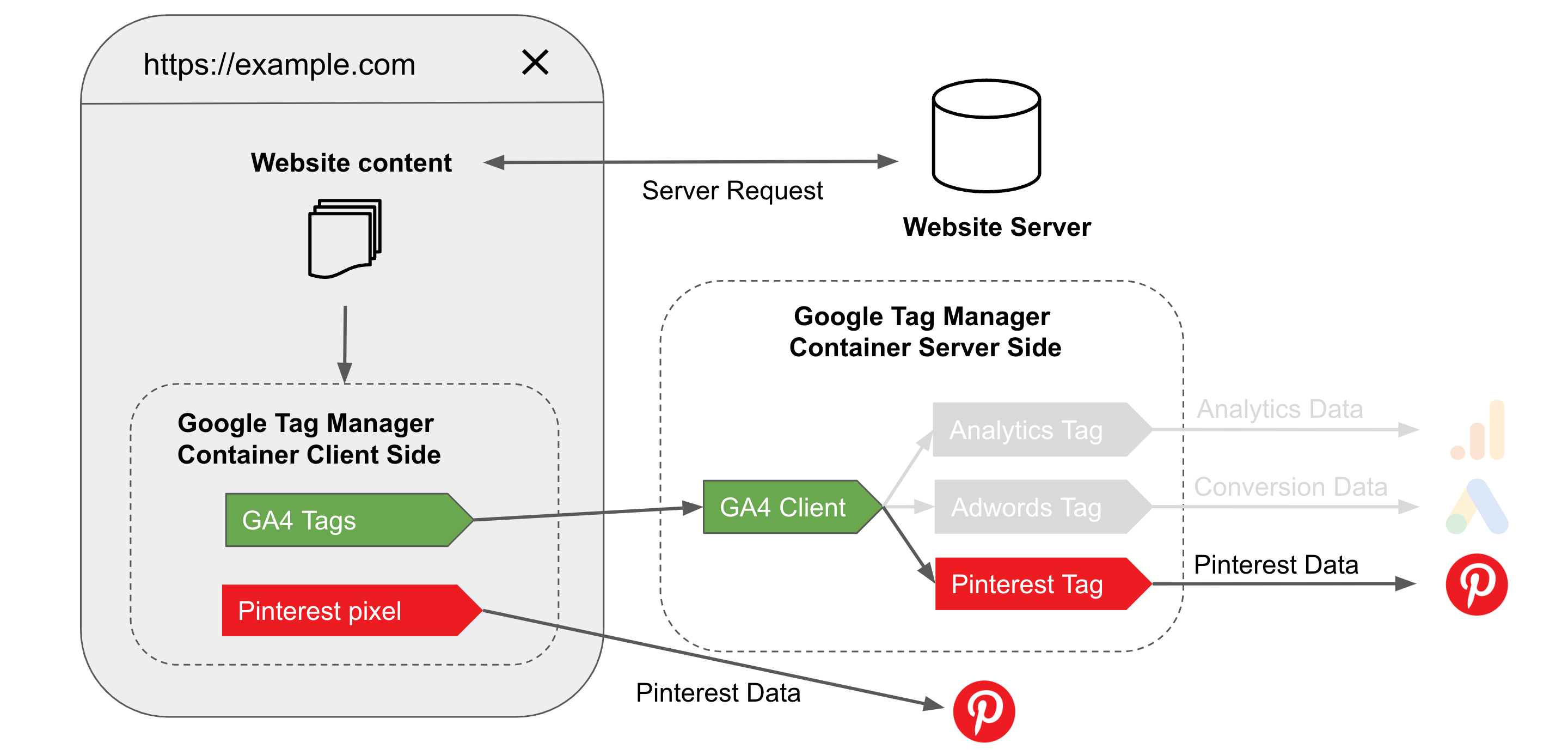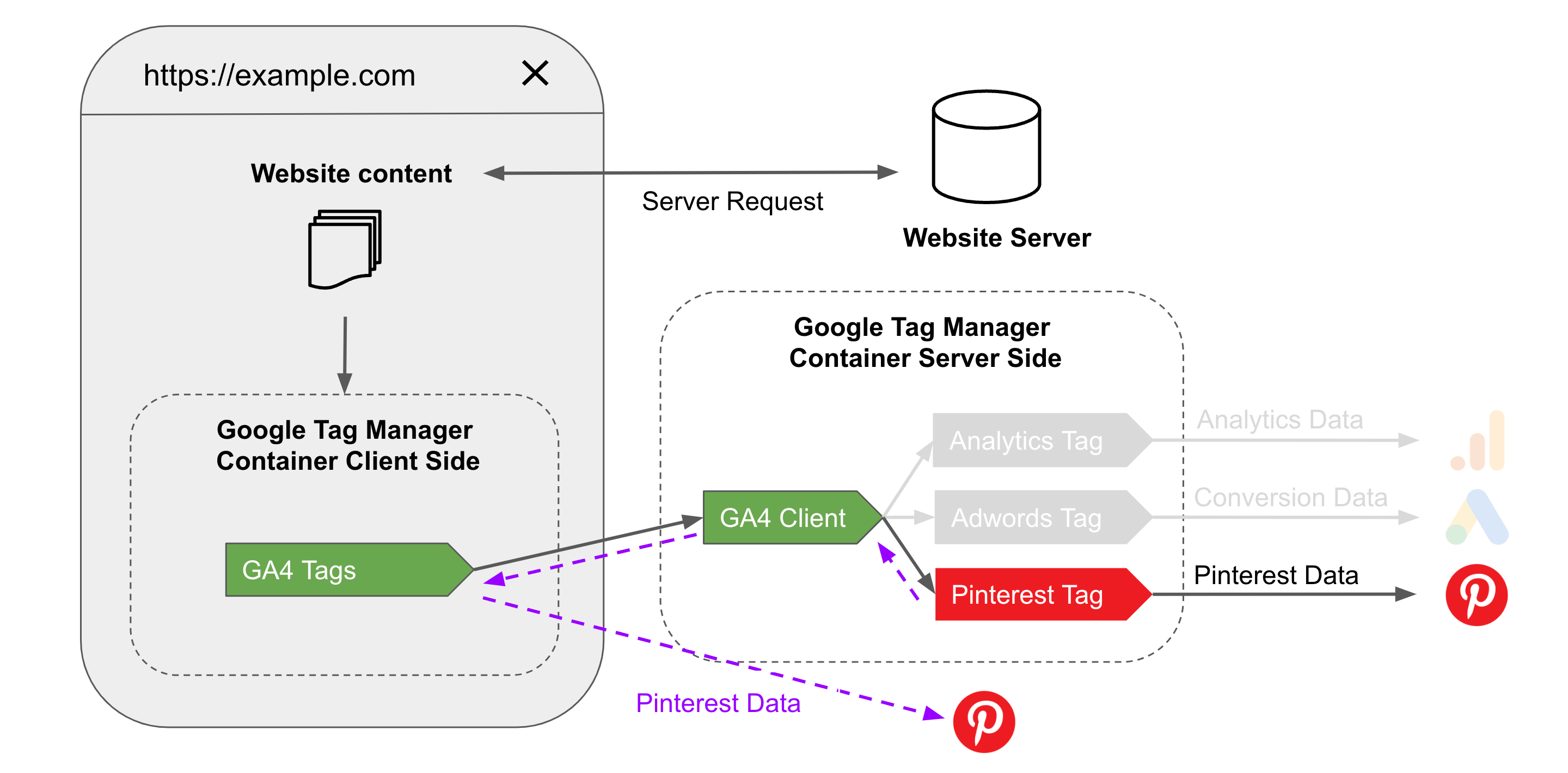Pinterest CAPI: boost your ad conversion tracking
Do you have advertising campaigns on Pinterest and haven’t yet installed Pinterest CAPI? Simple and quick to set up, it’s the best solution today for tracking your ads, and it would be a shame to miss out on this opportunity!
Why Pinterest Conversions API?
If you are running advertising campaigns on Pinterest, then you’ve already implemented the Pinterest Pixel (also called Pinterest Tag), which is triggered from the user’s browser to track conversions from your ads. However, as the world of tracking is constantly evolving, this Pixel is now becoming obsolete, notably due to ad blockers, the end of third-party cookies and restrictions in certain browsers (Safari for example). Another issue related to this Pixel is its impact on your site’s loading time, which can be detrimental to your web performance.
To alleviate these issues and ensure optimal conversion tracking for your advertising campaigns, Pinterest has developed its Conversion API called Pinterest Conversions API (or CAPI). This server-to-server technology is the ideal solution for bypassing the limitations of the Pixel, and can be set up very easily on your server-side container. By tracking your conversions via Pinterest CAPI, your conversion data will be more accurate, more robust and your advertising campaign performance improved.
Addingwell recommendations
Our recommendation is the same as Pinterest’s, which currently advocates double tracking via sending data via both Pixel and CAPI. The data will then of course be deduplicated (don’t worry, our Addingwell tag guarantees this deduplication).
How the Addingwell tag works
As you can see, the recommendation is to continue using Pixel, along with CAPI, as shown in the diagram below:

However, this dual implementation can be complex when it comes to managing the deduplication of events sent, and doesn’t solve web performance concerns, since the Pixel is still loaded from your user’s browser.
Our solution simplifies everything, so you don’t have to worry about deduplication or loading the Pixel on the client side. The Addingwell sGTM Pinterest CAPI tag works like this: the tag sends the data to CAPI and lets you load the Pixel directly from your server-side tag:

Expected benefits post set-up
After implementing Pinterest CAPI, adblocker bypass, and Safari 16.4 bypass, your data will be more reliable and accurate, and you’ll also see a greater number of attributed conversions in your Pinterest campaign manager.
Here’s an example, on a view_item conversion, after setting up Pixel + CAPI tracking:

After deduplication, we see +14% conversions on this event compared to tracking via the Pixel alone!
Next step
You’re ready to move on to the Pinterest CAPI set-up, following our detailed method!